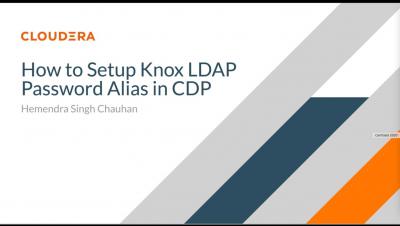Analytics
7 Steps to Operationalize Your Data Warehouse
How to Setup Knox LDAP Password Alias in CDP
Beginner's Guide to Cloudera Operational Database
My name is Shanmukha Kota and I am a recent graduate from University at Buffalo. I interned with Cloudera last summer and joined Cloudera as a software engineer a couple of weeks ago and this is my first experience with CDP and CDP Operational Database. For a new hire college graduate in the industry with only academic experience with HBase, I can only say it is very simple and easy to set up and work with CDP Operational Database.
5 Real-time Streaming Platforms for Big Data
Understanding Data-Driven CPQ
Extending the power of Chronicle with BigQuery and Looker
Chronicle, Google Cloud’s security analytics platform, is built on Google’s infrastructure to help security teams run security operations at unprecedented speed and scale. Today, we’re excited to announce that we’re bringing more industry-leading Google technology to security teams by integrating Chronicle with Looker and BigQuery.







